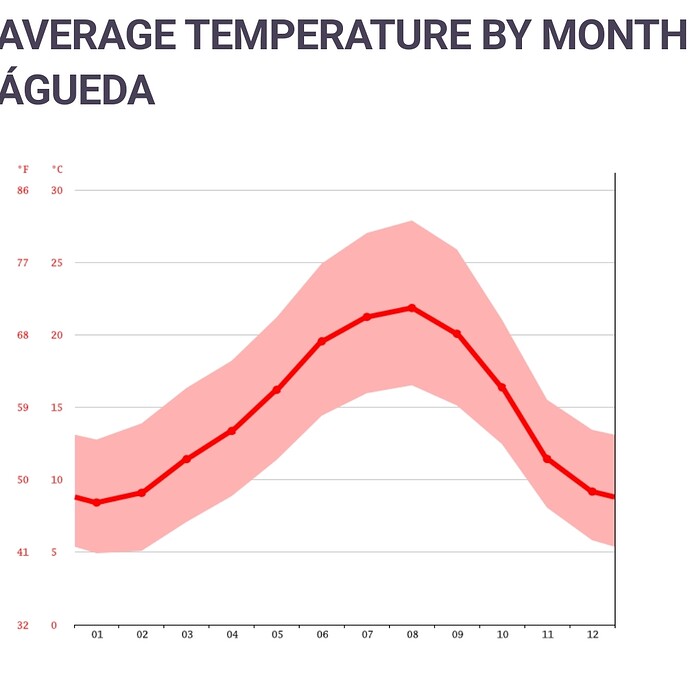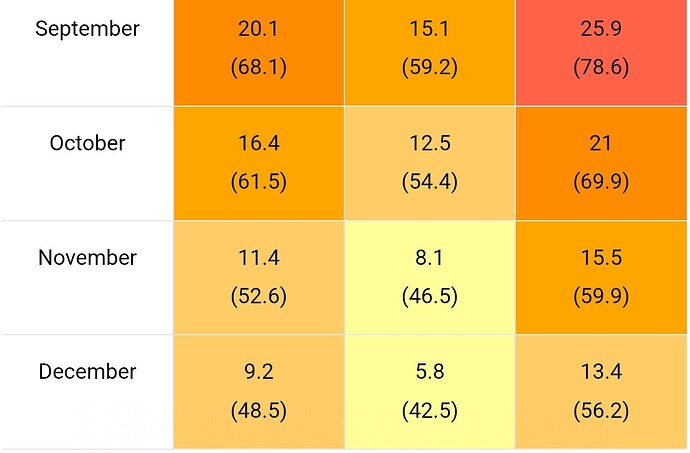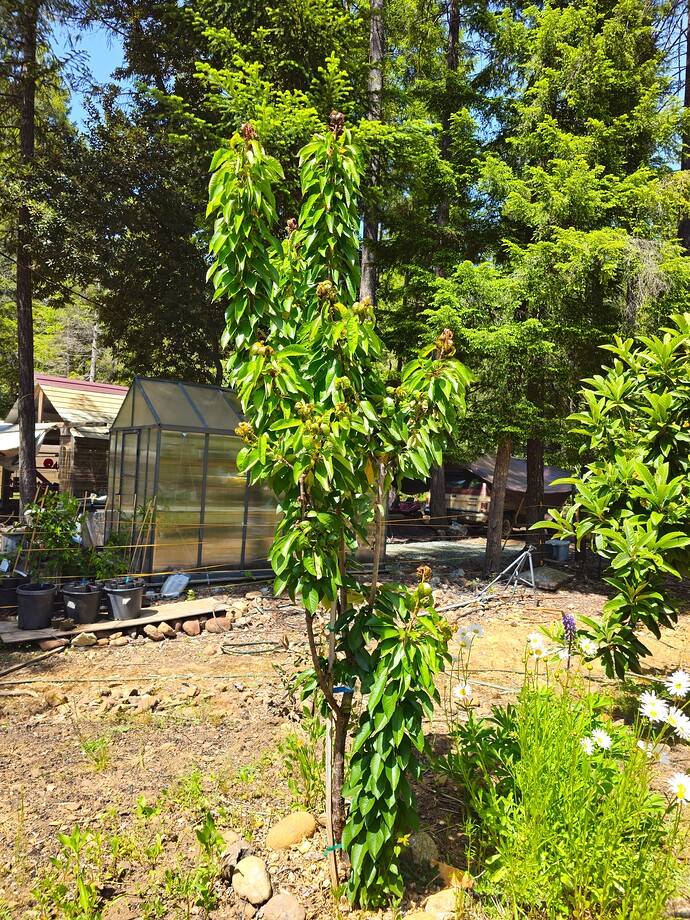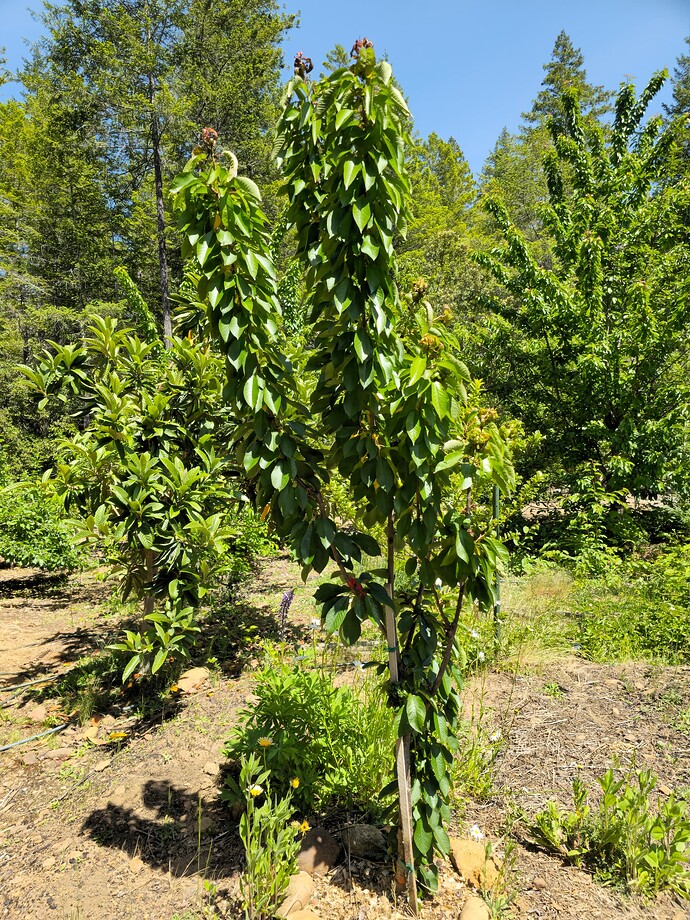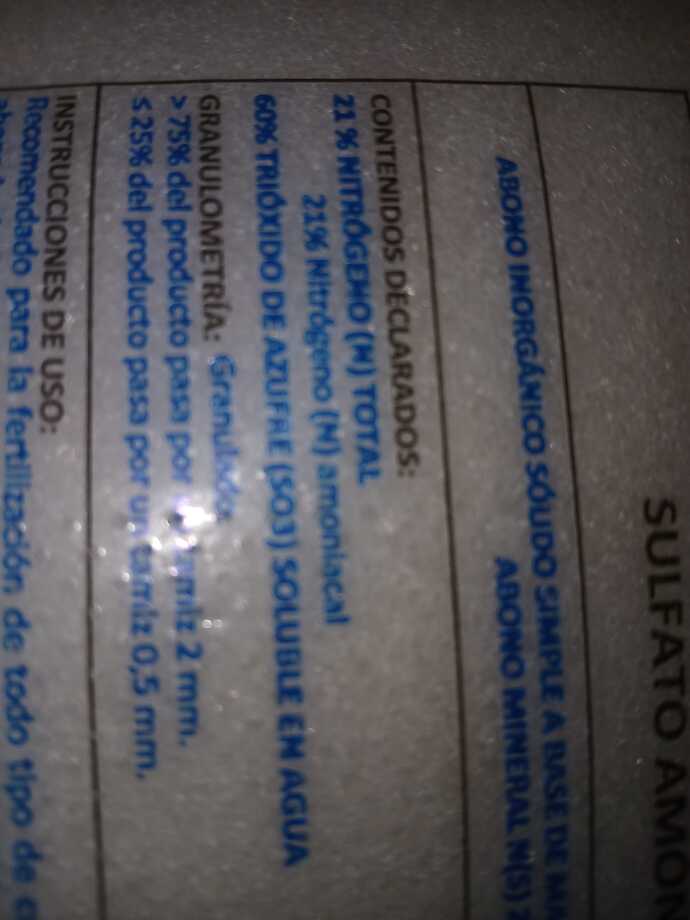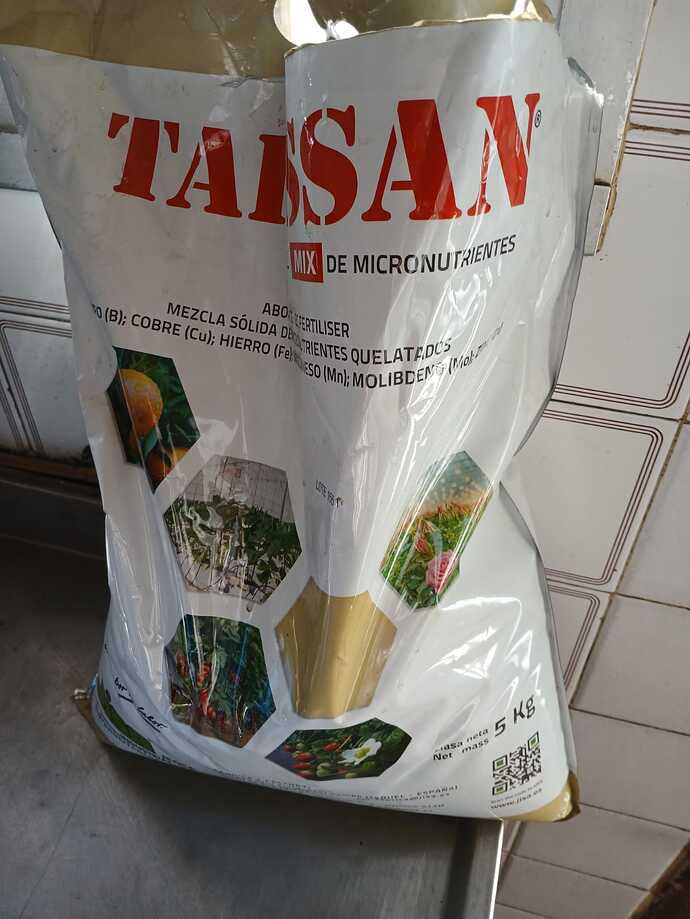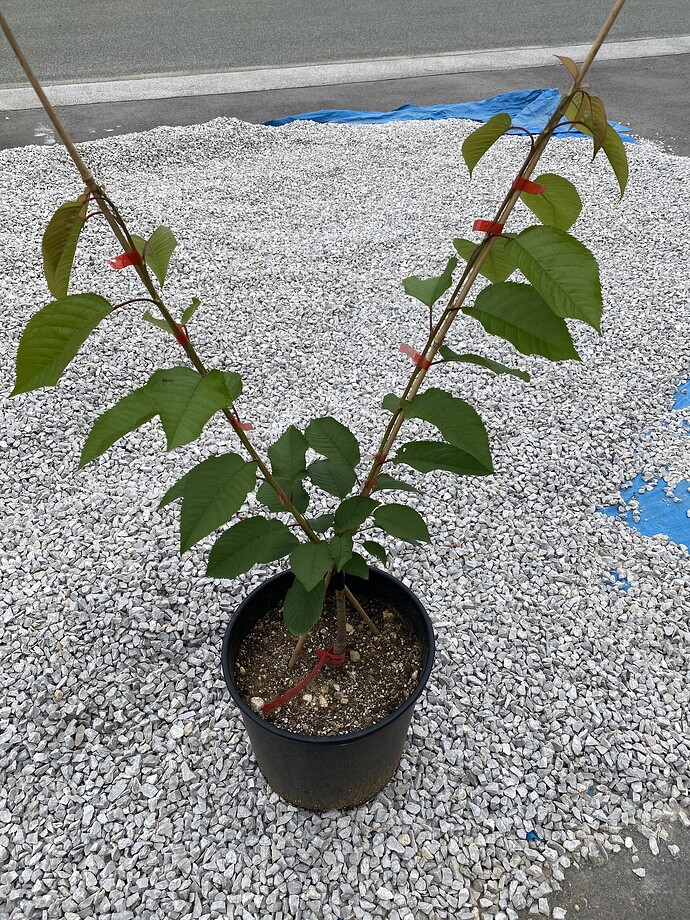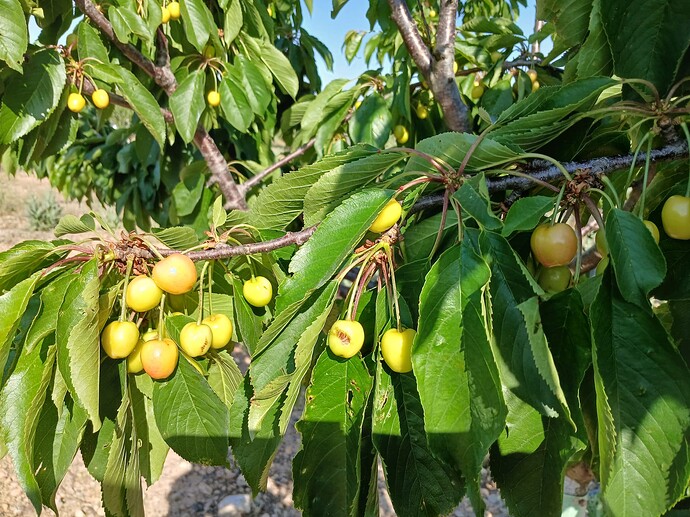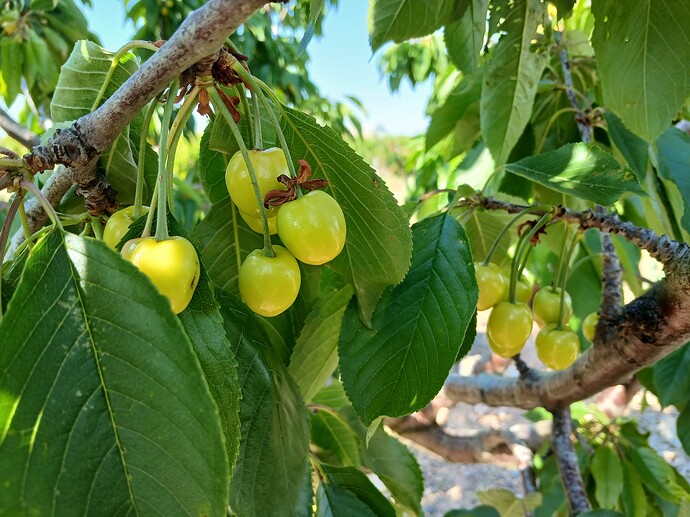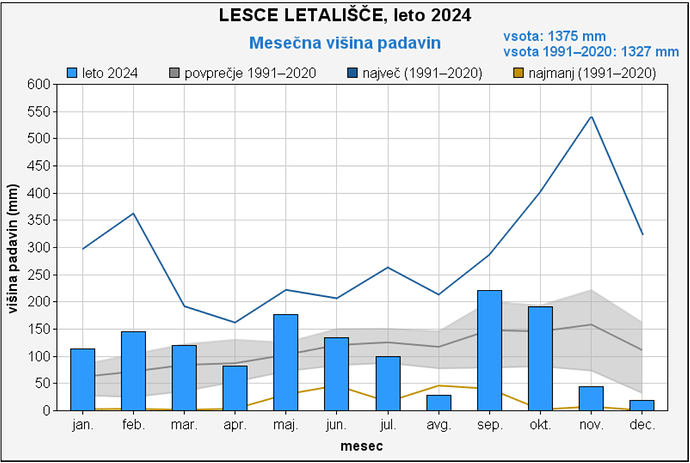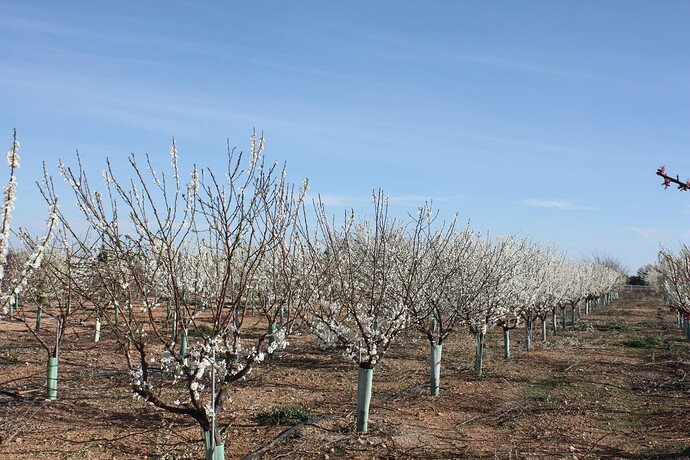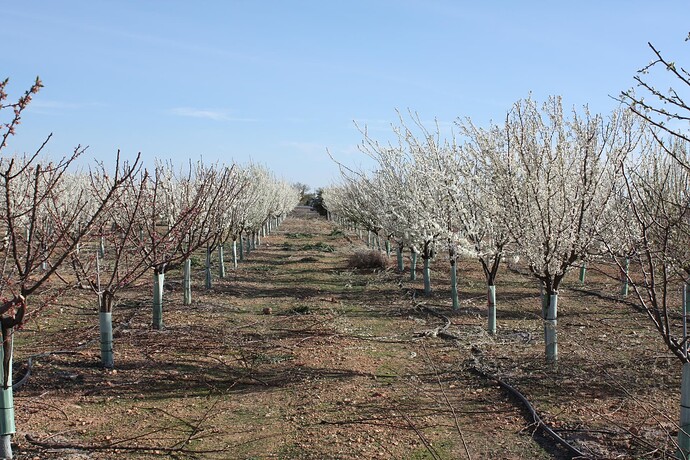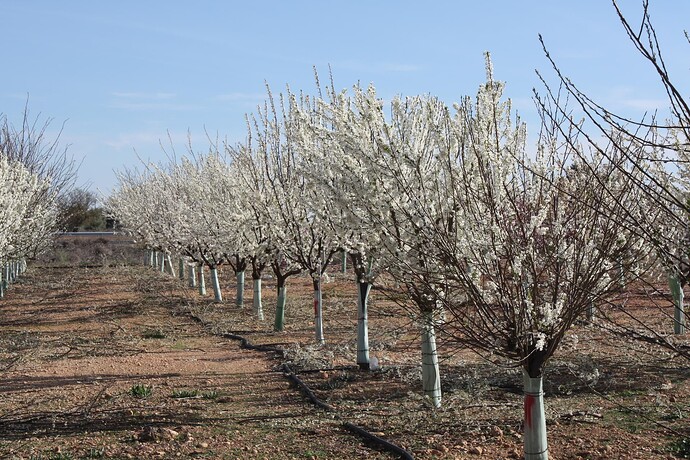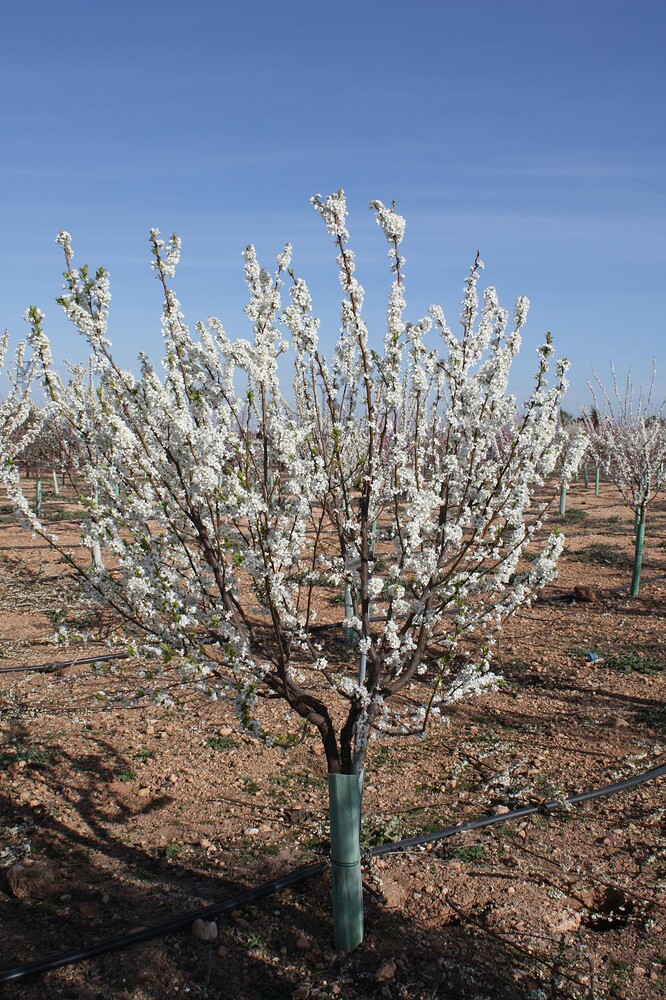Kiko, I chose that photo from the internet why was I recommendin to Beemster forum member , cracking-resistant cherry varieties available in the United States nurseries for hobbyst .
Black Star is one of the most resistant and is available at Merahbian Nursery.
Why did I use a photo from the internet instead of a photo of the Black Star cherry trees in my orchard?
Quite simply, because I wanted Beemster to understand that it’s a variety with a strong tendency to overload fruit, and heavy pruning is necessary to reduce the load and obtain good sizes.
As you know perfectly well, since you’re from the province of Albacete like me, we’ve had abundant rains during the cherry blossom season, and If I took photos of the branches of my Black Star trees, Beemster wouldn’t be clear that it’s a variety is prone to overload.
This is one of the two Black Star trees in my orchard today:
If I had posted this photos , Beemster I would have thought that this variety has no tendency to overload , and requires strong pruning, as with other hyper-productive varieties like Lapins, Pacific Red, or Royal Tioga.
You only have to look at post 126 and later in this thread to see that the photos of my cherry trees are my own, of varieties harvested from my orchard.
I know you have a personal grudge against me, for issues in Spain on which we disagree , bu this forum isn’t the right place for you to act like a fool, as you’re not only discrediting yourself, but you’re also discrediting the image North Americans may have of the Spanish.
Since you registered on this forum in 2023, you have only posted three times and have contributed absolutely nothing of value to American fans.
Many years ago, another stupid Spaniard (Sebastian Lendinez Galan, nicknamed Matrix)
He also dedicated himself to tarnishing the good name of the Spanish people, and you are the same type of person.
Kiko, you are a young man in his early thirties with a small commercial fruit farm. I’m sure you have many positive things to contribute to this forum , but if your intention is to cloud and create discord on this forum, it’s best not to continue down that path.
Best regards
Jose
